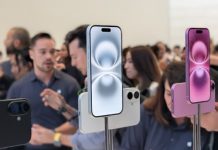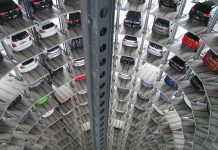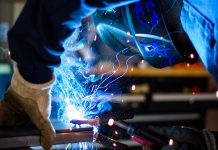{Car Repair Free Diagnostic? Local Options, What to Expect & When to Pay|Vehicle Service No-Charge Diagnosis? Area Options, What to Foresee & When to Pay Up
Car Repair Free Diagnostic? Local Options
That sinking feeling in your stomach. You hear a weird clunk, the car is pulling to one side, or worse – that dreaded check engine light blinks on. Unexpectedly, the liberty of driving becomes the concern of possible auto mending expenses. Your first instinct? Likely to find the quickest, most economical method to determine what is going on. And that is completely understandable. In today’s world, where every penny counts, the idea of a car repair free diagnostic sounds like a lifeline.
Who wouldn’t want a no-charge diagnostic car mending? Picture obtaining a precise understanding of your vehicle’s issues, comprehending precisely what needs fixing, all without paying out money before any real mending even commences. The promise of a no-charge car diagnostic service is undeniably tempting, especially when faced with the erratic expenses of vehicle repair. It’s like discovering a magic key that reveals the enigma under your hood, completely free of charge.
However, before you begin imagining mechanics lining up to provide you genuinely thorough, no-obligations auto service complimentary check-up services, let’s pause to be realistic. Because while the concept of a “car repair free diagnostic” is appealing, the actual reality of what’s on offer can be a little… different. Is it really free in the way you might hope? And even more crucially, is a car check-up no-charge repair option sufficient to actually get your auto fixed properly, or could it potentially steer you down the incorrect (and possibly pricier) path?
This piece is your simple manual for comprehending the domain of “vehicle service complimentary diagnosis” services. We’ll explore the local options available if you’re searching for a free check car repair, unpack what these “free” offers actually include (and often don’t include), and most importantly, help you decide when a car repair free diagnostic might be a helpful starting point, and when investing in a professional, paid diagnostic service is the smarter, and ultimately more cost-effective, decision for your vehicle’s long-term health. Let’s delve in and decipher the reality behind the “vehicle service complimentary check-up” promise.
{Unpacking “Free”: What Does a “Car Repair Free Diagnostic” Actually Mean?|Disentangling “Complimentary”: What Does a “Vehicle Mending Complimentary Check-up” Really Mean?
So, you are on the lookout for a “car repair no-cost diagnosis”. Great idea to explore your options! However, let’s be practical from the beginning: a truly comprehensive, in-depth car repair diagnostic performed by a highly skilled technician, using advanced equipment, and offering you detailed repair guidance… for absolutely free? In the real world of auto service, that’s nearly as uncommon as finding a unicorn doing your oil change.
The phrase “vehicle service complimentary diagnosis” is frequently utilized in marketing and promotion, but it’s vital to comprehend what is actually being offered behind that “complimentary” label. Let’s break down the common types of “car repair free diagnostic” services you might encounter and what you should realistically expect from each.
“Complimentary Code Reading” at Auto Supply Retailers: Engine Lamp Focus (OBD-II Only)
The most prevalent and widely advertised “car repair free diagnostic” is undoubtedly the “free code scan” offered by major auto parts retailers. {Think of giants like AutoZone, Advance Auto Parts, O’Reilly Auto Parts, and similar chains.|Consider giants such as AutoZone, Advance Auto Parts, O’Reilly Auto Parts, and comparable chain stores. They prominently promote this service, and it’s a genuine “freebie” in the sense that they won’t charge you labor to perform the scan.
What does this “complimentary code reading” really involve? It’s almost always limited to a basic OBD-II (On-Board Diagnostics II) fault code retrieval. OBD-II is the standardized diagnostic system in all current cars, primarily designed to monitor engine and emissions-related systems. Here’s what typically happens during a “free code scan”:
{Using a Handheld Scanner:|Utilizing a Portable Scanner Device: {A store employee, who is not a certified mechanic or diagnostic technician, will use a basic handheld OBD-II scanner.|A store employee, who is not a certified repairer or diagnostic expert, will employ a simple handheld OBD-II scanner device.
{Connecting to Your Car’s OBD-II Port:|Attaching to Your Auto’s OBD-II Port: {They’ll plug this scanner into your car’s diagnostic port, usually located under the dashboard on the driver’s side.|They’ll plug this reader into your auto’s diagnostic port, generally situated beneath the dashboard on the driver’s side.
{Reading Fault Codes:|Retrieving Error Codes: {The scanner will read out any stored Diagnostic Trouble Codes (DTCs) related to your car’s engine and emissions systems.|The scanner will interpret any saved Diagnostic Trouble Codes (DTCs) related to your vehicle’s engine and exhaust systems. These codes are standardized, often starting with a letter (like P, C, B, or U) followed by numbers.
{Providing a Code Readout:|Offering a Code Display Result: {The employee will usually provide you with the code number and perhaps a very generic, pre-programmed description of what the code might indicate.|The employee will generally provide you with the code number and perhaps a very generic, pre-programmed description of what the code may indicate. {For example, a code like “P0301” might be described as “Cylinder 1 Misfire Detected.”|For instance, a code such as “P0301” might be described as “Cylinder 1 Misfire Detected.”
And… that’s basically the scope of the “vehicle mending complimentary check-up” you obtain at an auto supply shop. It’s a very basic code readout, focused exclusively on your engine and emissions systems (the domain of OBD-II).
{Limitations of “Free Code Scans”:|Restrictions of “Complimentary Code Reads”:
{OBD-II System Focus Only:|Only Concentrated on OBD-II System: OBD-II is mainly concerning engine and exhaust. A free code scan will not diagnose issues in other critical vehicle systems like your ABS (Anti-lock Braking System), SRS (Supplemental Restraint System – airbags), Transmission, Chassis, or Body Control Modules. If your warning light isn’t engine-related (e.g., ABS light, airbag light), a free code scan may be completely useless.
{Symptom, Not Diagnosis:|Indicator, Not Check-up: A code is a symptom, not a diagnosis. {“P0301 – Cylinder 1 Misfire” tells you there’s a misfire, but not why.|{“P0301 – Cylinder 1 Misfire” informs you there is a misfire, but not the reason.|“P0301 – Cylinder 1 Misfire” tells you there’s a misfire, but not the cause.|“P0301 – Cylinder 1 Misfire” tells you there’s a misfire, but not why that occurred. Is it a spark plug? Fuel injector? Wiring? Engine fault? The no-charge code scan won’t pinpoint the underlying cause. It merely directs you to a wide area.
{No Interpretation or Repair Advice:|Interpretation or Mending Advice Not Provided: {Store employees are not qualified diagnostic technicians.|Shop staff members are not skilled check-up experts. {They can read the scanner, but they can’t legally or competently provide actual car repair advice beyond suggesting parts that might be related to the code.|They can interpret the reader, but they cannot legally or competently offer genuine vehicle mending suggestions beyond recommending components that might be associated with the code. Their proficiency is in selling components, not diagnosing intricate vehicle issues.
{Marketing Tool:|Advertising Strategy: {Let’s be honest, these “car repair free diagnostic” code scans are primarily marketing tools.|Let’s be frank, these “car repair no-cost diagnosis” code scans are primarily advertising tools. {Auto parts stores offer them hoping to get you in the door, identify a potential part need (based on the code), and then sell you those parts right there and then.|Auto supply shops provide them hoping to get you through the door, recognize a potential component need (based on the code), and then sell you those components right there and then.























